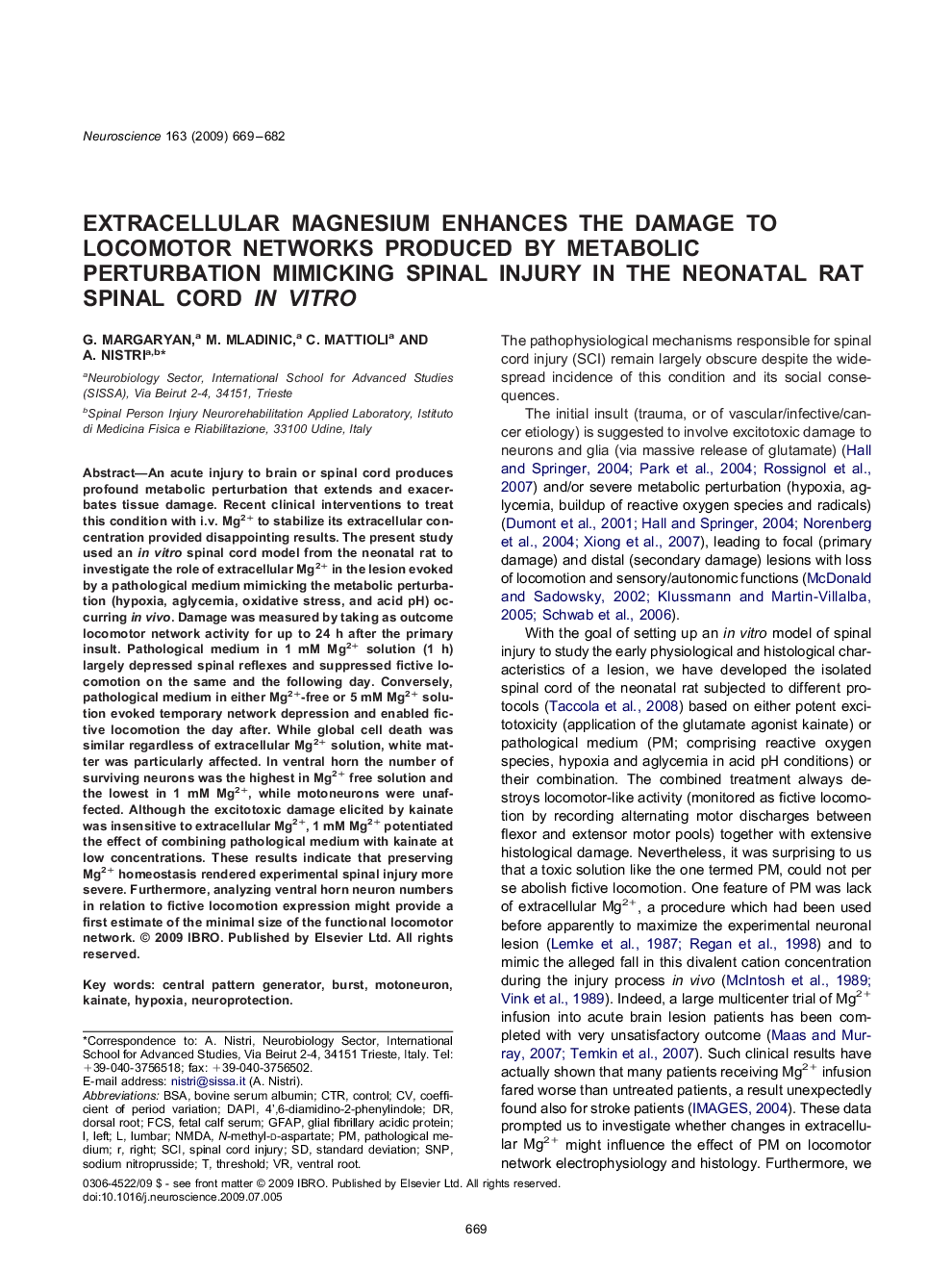| کد مقاله | کد نشریه | سال انتشار | مقاله انگلیسی | نسخه تمام متن |
|---|---|---|---|---|
| 4340116 | 1295783 | 2009 | 14 صفحه PDF | دانلود رایگان |

An acute injury to brain or spinal cord produces profound metabolic perturbation that extends and exacerbates tissue damage. Recent clinical interventions to treat this condition with i.v. Mg2+ to stabilize its extracellular concentration provided disappointing results. The present study used an in vitro spinal cord model from the neonatal rat to investigate the role of extracellular Mg2+ in the lesion evoked by a pathological medium mimicking the metabolic perturbation (hypoxia, aglycemia, oxidative stress, and acid pH) occurring in vivo. Damage was measured by taking as outcome locomotor network activity for up to 24 h after the primary insult. Pathological medium in 1 mM Mg2+ solution (1 h) largely depressed spinal reflexes and suppressed fictive locomotion on the same and the following day. Conversely, pathological medium in either Mg2+-free or 5 mM Mg2+ solution evoked temporary network depression and enabled fictive locomotion the day after. While global cell death was similar regardless of extracellular Mg2+ solution, white matter was particularly affected. In ventral horn the number of surviving neurons was the highest in Mg2+ free solution and the lowest in 1 mM Mg2+, while motoneurons were unaffected. Although the excitotoxic damage elicited by kainate was insensitive to extracellular Mg2+, 1 mM Mg2+ potentiated the effect of combining pathological medium with kainate at low concentrations. These results indicate that preserving Mg2+ homeostasis rendered experimental spinal injury more severe. Furthermore, analyzing ventral horn neuron numbers in relation to fictive locomotion expression might provide a first estimate of the minimal size of the functional locomotor network.
Journal: Neuroscience - Volume 163, Issue 2, 6 October 2009, Pages 669–682